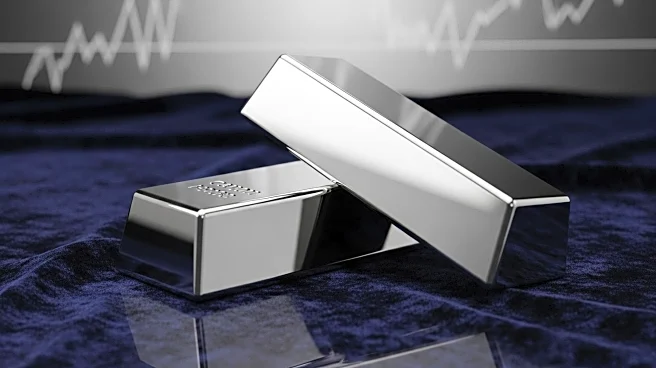What's Happening?
Silver prices have surged to a new record, climbing over 3% to exceed US$52.35 per ounce, as concerns over U.S.-China trade relations and expectations of further U.S. Federal Reserve rate cuts drive demand. The price of silver has risen by 22.93% over the past month and is up 68.05% compared to the same time last year. This increase follows a period of significant growth, with silver reaching near historical levels during Q3 2025. The bullish environment for silver is attributed to the anticipated monetary easing by the Federal Reserve, which has created favorable conditions for precious metals.
Why It's Important?
Silver's price surge highlights its growing significance as both a precious and industrial commodity. The metal's strong performance reflects broader economic trends, including the impact of geopolitical tensions and monetary policy shifts. As silver gains prominence, it offers investors a hedge against inflation and economic uncertainty, similar to gold. The increased demand for silver underscores its role in diversifying investment portfolios and protecting against market volatility. This development has implications for industries reliant on silver, including electronics and renewable energy, as they navigate fluctuating commodity prices.
What's Next?
The outlook for silver remains positive, with expectations of continued price increases driven by ongoing trade tensions and monetary policy changes. Investors and industry stakeholders will closely monitor these developments, adjusting their strategies to capitalize on silver's rising value. The potential for further rate cuts by the Federal Reserve may sustain the bullish environment for silver, influencing market dynamics and investment decisions.
Beyond the Headlines
Silver's ascent reflects broader shifts in the global economy, where traditional safe-haven assets are gaining renewed attention amid geopolitical instability. The metal's dual role as a precious and industrial commodity positions it uniquely in the market, offering insights into the intersection of economic policy and industrial demand. This trend may lead to long-term changes in how silver is valued and utilized across various sectors.












